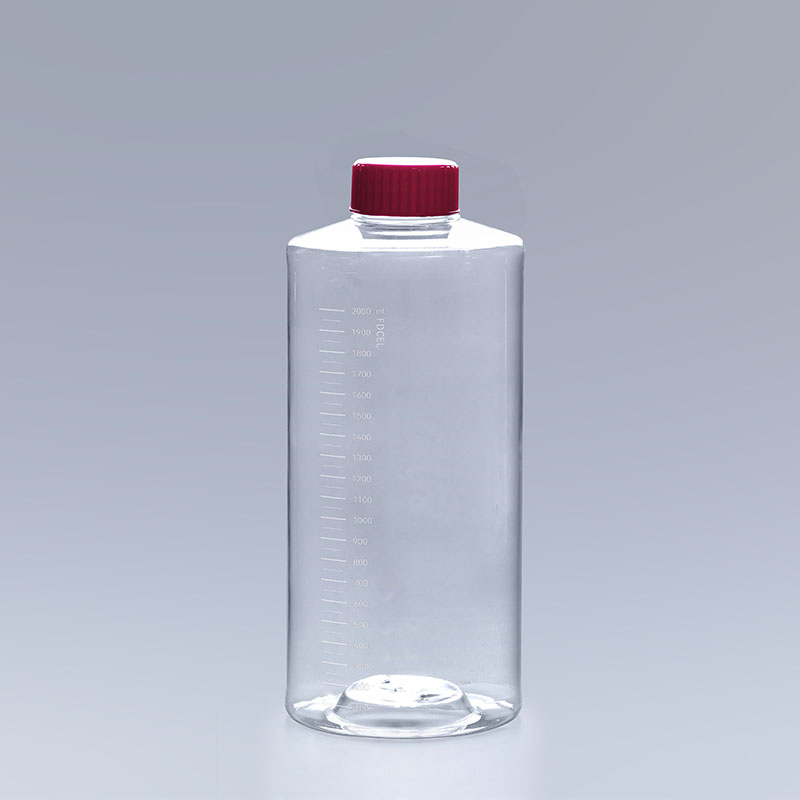The 293 cell line, derived from human embryonic kidney cells transformed by adenovirus type 5 (strain 75), is widely used for adenoviral vector packaging and exogenous gene expression studies. These adherent epithelial-like cells exhibit typical adenovirus-transformed phenotypes and support the replication of Ad5 and other adenovirus serotypes. As a hypotriploid human cell line, 293 cells can grow in both Ca²⁺-containing and Ca²⁺-free media, as well as in reduced-serum conditions.

2L TC treated cell roller bottles
Cell roller bottle culture serves as a transitional phase from small-scale to large-scale cultivation or as a preparatory step for bioreactor inoculation. Compared to traditional static monolayer culture, roller bottles offer three key advantages:
1.Increased Growth Surface – Provides more space for cell attachment and proliferation.
2.Gentle Agitation – Prevents potential adverse effects from localized accumulation of media components.
3.Enhanced Gas Exchange – A thin layer of media covering the cells facilitates efficient oxygen and CO₂ diffusion.
Since 293 cells are sensitive to environmental changes and prone to clumping, uniform adhesion requires strict control of temperature (including media temperature), pH, and rotation speed to maintain stable growth conditions.
The FAI climbed 5.9 percent year-on-year in the first 11 months of 2018, quickening from the 5.7-percent growth in Jan-Oct, the National Bureau of Statistics (NBS) said Friday in an online statement.
The key indicator of investment, dubbed a major growth driver, hit the bottom in August and has since started to rebound steadily.
In the face of emerging economic challenges home and abroad, China has stepped up efforts to stabilize investment, in particular rolling out measures to motivate private investors and channel funds into infrastructure.
Friday's data showed private investment, accounting for more than 60 percent of the total FAI, expanded by a brisk 8.7 percent.
NBS spokesperson Mao Shengyong said funds into weak economic links registered rapid increases as investment in environmental protection and agriculture jumped 42 percent and 12.5 percent respectively, much faster than the average.
In breakdown, investment in high-tech and equipment manufacturing remained vigorous with 16.1-percent and 11.6-percent increases respectively in the first 11 months. Infrastructure investment gained 3.7 percent, staying flat. Investment in property development rose 9.7 percent, also unchanged.
 English
English


















































